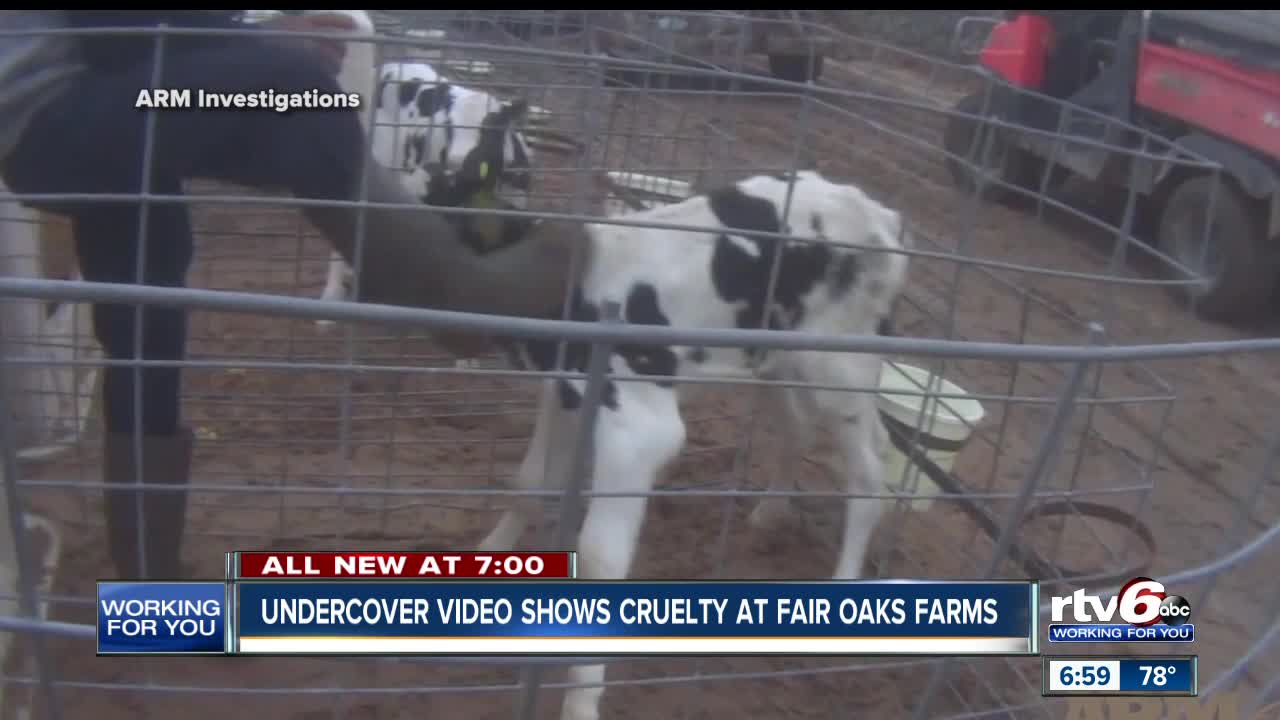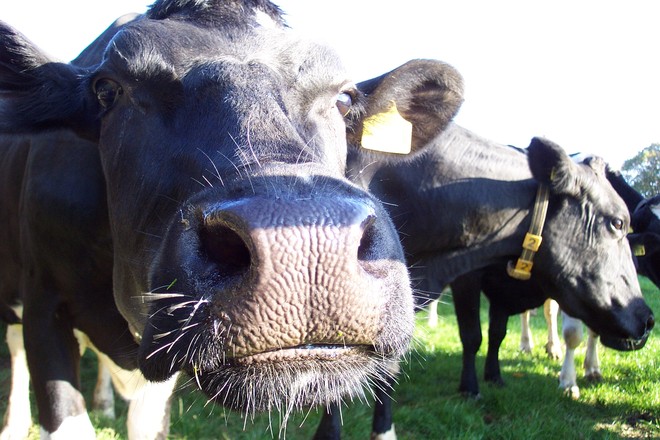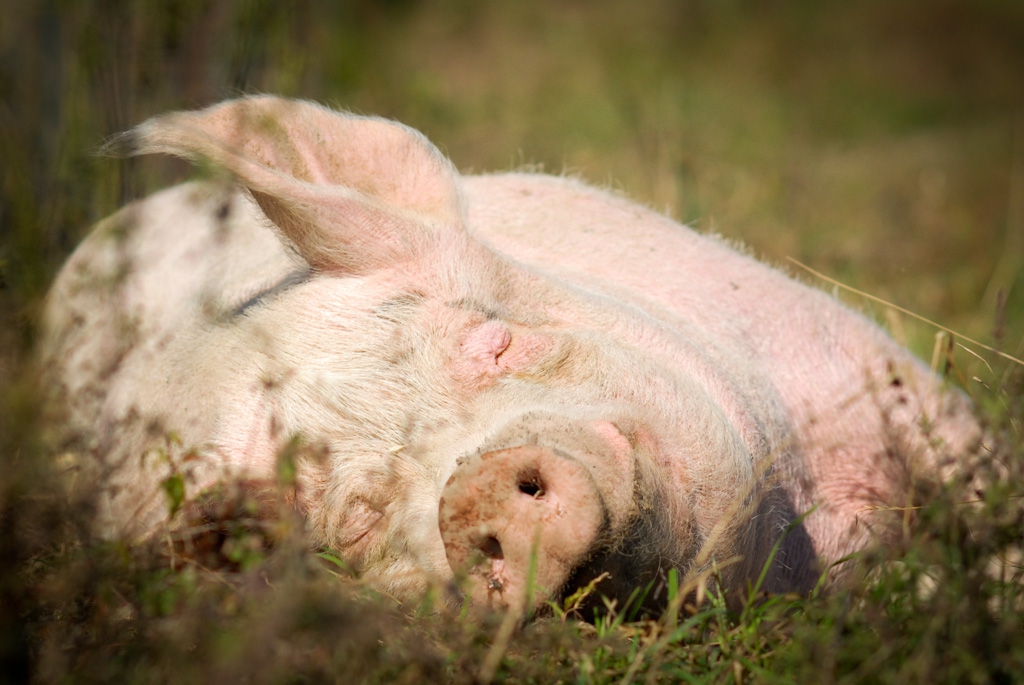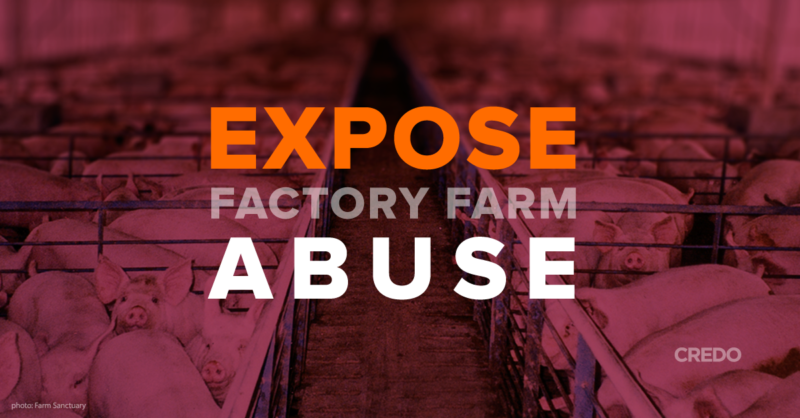In June I attended the British Veterinary Association’s annual Animal Welfare Foundation (AWF) conference in London. After one of the presentations on farmed animal welfare, a veterinarian asked the panel how they proposed to deal with the rise of ‘militant veganism’. By way of illustration, the vet mentioned an image of a calf being disbudded that had circulated on social media. He mocked vegans who had misinterpreted the image and accused inhumane farmers of “lasering the cow’s head off”. As I watched the conference room dissolve into laughter, I wondered how I’d missed the joke. To disbud a calf, a 600 degree iron is pressed against his head, burning through the nerves and blood vessels that normally allow the horn bud to develop. Sometimes crude instruments are used to physically gouge out horns or buds, or a burning caustic paste, which might run in the calf’s eye. The conscientious farmer would use local anaesthetic but evidence shows that the anaesthetic doesn’t completely alleviate the pain for the adult cow for any of these procedures, during or after [1]. The commonly used lidocaine, for instance, is only effective for up to three hours. So while vegans hadn’t got the situation exactly right, they’d correctly identified that this was a farming practice in which an animal was seriously suffering. Maybe my vegan diet has stunted my sense of humour, but I personally don’t see anything funny about that.

Of course, by exaggerating the cruelty shown in the disbudding image (intentionally or not), vegan activists had undermined their case against the farming industry. They allowed the facts of dehorning and disbudding to appear a lesser evil compared to the fictional horror of ‘evil farmers’ decapitating a cow. If the reality of the procedure had been presented accurately, the campaign would have been far more effective. Because ultimately it is the standard farming practices that take place on ‘normal’ facilities, intensive and extensive, that must be challenged and exposed if real change is to take place. Highlighting the worst case atrocities only throws the everyday problems into low shadow and distracts public attention away from the often chilling normality. We fail to see the rows of pigs in farrowing crates because we’re focusing on the rogue farmer kicking piglets. When the scandal at Indiana’s Fair Oaks dairy farm broke, showing workers punching cows and snapping their tails in half, public attention focused on these abuses at the expense of the real scandal: the fact that moments after giving birth, with their afterbirths still visible, mothers were forced onto the milking line. This allowed the farm’s co-founder to reassure the public that Fair Oaks would fix the problem, saying “It is a shock and an eye-opener for us to discover that under our watch, we had employees who showed disregard for our animals, our processes and for the rule of law.” In the aftermath of the press attention, the campaign group Animal Recovery Mission (ARM) were even accused of staging the abuse themselves to bring down the farm. If the exposé had focused on the ‘normal’ suffering going on at the farm – the separation of calves from mothers, the exhaustion of the female cows, the overall poor conditions that these animals were kept in – it would have been far harder to turn this around on ARM or for Fair Oaks to offer a ‘quick fix’.

At the AWF conference, there were many veterinarians endorsing large animal production facilities where veterinary care is “often better” than on smaller organic farms. At one large-scale dairy facility, for instance, there are four 10,000 milking cow dairies on one site and less than 2 percent mortality. The argument that better veterinary care is possible on intensive farms is made often and I don’t dispute it. But how is mortality a measure of welfare? As Yuval Noah Harari puts it in his 2015 Guardian article, domesticated farmed animals enjoy steady supplies of food, water and shelter, their diseases are treated and they are protected from predators and natural disasters. But:
Humans can cause tremendous suffering to farm animals in other ways, even while ensuring their survival and reproduction. The root of the problem is that domesticated animals have inherited from their wild ancestors many physical, emotional and social needs that are redundant in farms. Farmers routinely ignore these needs without paying any economic price. They lock animals in tiny cages, mutilate their horns and tails, separate mothers from offspring, and selectively breed monstrosities. The animals suffer greatly, yet they live on and multiply.
Jim Reynolds, Professor of Large Animal Medicine and Welfare at Western University in California, was arguing for the enhanced welfare of dairy cows on one of these large intensive farms. Yet he also admitted that given the harsh climate where the facility sat, the cows had to be kept permanently inside, for their entire lives. This situation was far from ideal, he said, but ‘there was no other choice’. On the contrary, any ‘militant vegan’ would tell him that there is a choice: don’t breed dairy cows at all. Like commercial egg production, where even free range facilities must macerate or gas male chicks if they are to remain profitable, dairy is an industry that is inherently cruel, no matter how healthy the animals may be. The exploitation of the dairy industry is well-covered elsewhere on this blog and takes place even on the ‘happiest’ of farms (Fiona Proven of The Calf at Foot Dairy, a small organic farm that has received positive publicity for allowing calves to stay with their mothers, still sends ‘her boys’ to slaughter at 2 years old). The conclusion of the morning session at AWA was that in the majority of farming systems – where animals are produced in large numbers – there’s no immediate way to end standard farming practices like disbudding, beak trimming and tail trimming without causing other welfare problems like tail biting or feather pecking. Yet not one veterinarian suggested that perhaps the very practice of farming animals should be questioned. Instead they wondered how to tackle the veganism that ‘threatens’ the farming industry.
Veterinarians have sworn an oath to put the welfare of animals above all else, including economic concerns; they should be our natural allies. So why did these farm veterinarians feel threatened by, rather than supported by, vegans? Because they’re on the defence; they work with farmers every day and they see that most farmers actually care about the welfare of their animals. When vegans attack these farmers in our messaging, we’re not doing the movement any favours. We need to stop assuming that farmers are bad. For the most part, this simply isn’t true. I know of many (I’d go so far to say ‘most’) farmers who care deeply for their animals and want them to live the best lives possible. A lot of these farmers dehorn their cows or trim the beaks of their chickens primarily to stop them harming each other and they use anaesthetic. They give the animals names and appreciate their individual quirks and personality traits. They go above and beyond, sacrificing their own needs to keep their animals safe.

It is on these farms, where animals are healthy and well-cared for, and by talking with these farmers, who are often the most passionate advocates for ending the horrors of factory farming, that vegans will find their most persuasive arguments for change. We’ve all been guilty of sharing statistics and imagery from the grimest of intensive farms and presenting this as the only ‘true’ picture of farming. But by doing this, we lose the sympathy of those farmers who have rejected this path and could actually help us fight it. Moreover, by refusing to villainise farmers, we open the door to rationally interrogate the system rather than the people trapped within it. To question the normalisation of systematic livestock production that forces animal lovers, whether extensive or intensive farmers, to put economic needs first. To ask why they are supporting an industry that asks them to send their animals to slaughter, to mutilate their bodies, to separate dairy calf and mother, to farm breeds that have been genetically engineered to produce more eggs or milk at the expense of the animal’s wellbeing, or, as Reynolds wrestles with, to keep them healthy as the expense of ever feeling the grass under their hooves. The majority of farmers don’t want to send their animals to slaughter any more than the underpaid slaughterhouse workers want to operate the kill line. But economics dictates that it must be so.
It’s also far more effective in the long term to challenge the best case scenario than the worst. My conviction that veganism is the right path is never stronger than when I leave an animal welfare conference. Here I see well-meaning people trying to make marginal improvements to a broken, exploitative system; whether that be to gather chickens for slaughter in the least damaging way, or change the angle of the concrete walls of a barren feeding pen to lessen the chances of a mother squashing her piglets. I have yet to hear any talk of scrapping the system altogether.

Today, sanctuaries offer a model where domestic cows, pigs and chickens can live out their full lives and, as we finally begin to prioritise sustainability, there’s a possibility that farmers could be funded to conservation graze their animals into old age. Or maybe the advent of cell-based meat will create a brand new model where we can grow meat from animals without harming them, thus creating small organic farm/sanctuary hybrids. Either way, it’s unlikely that there’s any place for traditional farming in a future where animals are treated ‘humanely’. If we want to realise that future, we need to stop with this black and white narrative where vegans are ‘right’ and farmers are ‘wrong’, or vice versa. Instead, farmers, vets and vegans need to work towards collaborative solutions that truly put the animals first.
[1] Stafford K., Mellor D. (2005). Dehorning and disbudding stress and its alleviation in calves. Veterinary Journal, 169:337-349.

Thanks for this Alice!
It is thrown into sharp relief as well with the recent news from Switzerland of a referendum on banning factory farming. Interesting since, as I understand it, there is much less of a vegan movement there. Are the Swiss public at large more progressive on this than our own body of animal welfare experts?
At the recent LJMU conference, Steve McCulloch made this point. That, oddly, it seems the public have a more accurate instinctive understanding of animal welfare than trained animal welfare scientists, particularly vets. I think he meant that, while obviously the public is not always right and misconstrues certain practices out of well-meaning ignorance, we automatically think of welfare as referring (at least in part) to an experience, an internal state. It seemed to me that was the core issue with the AWF panel – it was purely a physiological measure to them and (in a reversal of their accusation against ‘militant vegans’) they focused purely on the best case scenarios and were dismissive of even the mediocre, nevermind the worst.
The bottom line though, as you say, is that we need to learn how to bridge those gaps, and reject both forms of distortion in favour of disseminating true information and concerns about the features of these systems that aren’t so easily rebuffed by industry. That definitely seems fertile ground for collaborative working with thoughtful farmers to me. X